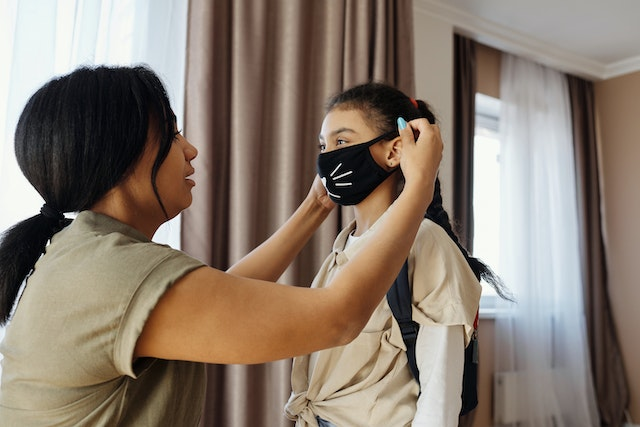
Understanding the D Dimer test in Corona for COVID 19
Time to read 5 min
Time to read 5 min
In many cases, patients with COVID 19 may test negative for an RTPCR, but have the virus nonetheless. Doctors are advising patients to undergo D-Dimer, CRP, Interleukin-6, and other blood tests that can capture information about whether someone has the virus.
The D Dimer test in Corona is a critical test for monitoring the development of the virus within the body. It is a key marker to track, so that timely interventions can be provided to ensure that the patient is protected from dangerous consequences. With excess blood clotting being a key secondary condition associated with COVID, getting a D-dimer test done is important.
When your body clots an open wound, it produces a leftover product called a D-dimer. This fibrinogen molecule is a protein produced by the liver and is responsible in the process of coagulation. Without clotting, our bodies would continue to bleed out, which is why checking for D-dimer levels is important.
With D-dimer being detectable for up to 8 hours after clotting, it is a great way to check for COVID risk escalation in patients. High levels of D-dimer can signal the presence of a major clot, which could escalate when someone has COVID. That's why getting tested is important.
One of the risk factors associated with COVID is clotting in the lungs. Since COVID is a lower respiratory virus, there can be serious risks associated with breathing, blood oxygen, etc. The presence of these clots can be determined with a D dimer test as D dimer is the leftover product of fibrin degradation.
When the patient is critical and in the hospital, tracking D Dimer for clotting becomes a serious area of concern. By looking at the levels of D dimer in the body, doctors can diagnose whether the lungs are recovering or not in a timely way. That's why the D dimer test is vital in monitoring the patient's health.
A higher level of D dimer present in the body indicates that there are several clots present. In the case of COVID, there could be clots present in the lungs which could further impact breathing.
Medical staff would have to prepare for oxygen requirements if the D dimer levels rise sharply due to increased clotting. Your risk factor for condition escalation also rises when you have several large clots present in your body, which can be determined through high D dimer levels.
The D Dimer test can be used for a range of medication conditions and to understand the impact of clotting in other issues. Doctors may recommend patients to test for D Dimer levels to rule out the possibility of specific conditions developing.
A blockage in the artery in the lungs can occur in the case of pulmonary embolism. A clot can break lose in another part of the body and travel to the lungs, leading to further complications. You need a D dimer test to track PE risk in the case of COVID.
DIC is a serious condition in which several clots begin to form. They can be present throughout the body, causing major organ damage and critical complications. If you have COVID, then your doctors will track for DIC through D Dimer.
DVT is a critical risk as well, wherein there could be a clot inside a vein. The clotting could be in the lower leg region, and can occur in other parts of the body as well. D dimer can be used to check for clotting.
A potential stroke can be determined with the D dimer test, as there could be blockages in the blood supply to the brain. This is a highly risky situation for anyone, which is why D dimer test is one of the first ones to determine the potential threat.
Elevated d dimer level readings can be dangerous in the case of COVID 19 patients. D Dimer is a key marker and D dimer testing is recommended in COVID 19 cases. D-dimer greater than 0.5 μg/ml is associated with severe infection in patients with COVID 19. Several researchers, doctors, et al have recommended to continuously track D Dimer in patients with COVID.
It can take more than 3 months for the D Dimer levels to revert to normal ranges after you have recovered from COVID. You can continue to take D Dimer tests to track your levels after you have recovered. It is also important to consult with your doctor about how best to manage clotting and related health issues.
There are several precautions you can take in the case of Coronavirus.
Wearing a mask when outside can help lower the spread of the disease, and reduce your risk of getting infected. You can carry multiple masks so that you can store them safely in your car, bag, etc.
Getting regularly tested for COVID is important as it is beneficial to understand whether you are asymptomatic if you aren't experiencing the signs. You can also understand your risk factors of developing COVID based on the test.
In schools, offices, shopping centres, and other high density zones it is important to take high precautionary measures. Wearing masks, keeping distance, and avoiding crowds will be key for yourself and your family.
With COVID being a key risk factor for developing a pulmonary embolism PE, it is important to understand the symptoms associated with the medical condition. Your doctors can identify them sooner and provide the right treatment.
In the event that you are experiencing shortness of breathing or uncontrollable anxious breathing, you should get a check-up done immediately. You could be experiencing Dyspnoea symptoms that need medical attention.
If you suddenly start sweating, and having shortness of breathing, then you should get checked out for PE. This can help in getting the right medical attention at the right time.
If you are experiencing back pain that is unbearable, then you should consider getting tested for PE. Your doctors may advise you to get the right testing performed, especially if you are already dealing with COVID.
You should be mindful of whether you are experiencing escalating chest pains if you already have issues with breathing. You can get your tests done to determine if you have a pulmonary embolism.
A rapid heartbeat is one of the other major symptoms of a PE. You shouldn't take this symptom lightly and should focus on getting the right tests done.
*Medical Disclaimer - The following information is for educational purposes only. No information provided on this website, including text, graphic, and images, are intended as substitutes for professional medical advice. Please consult with your doctor about specific medical advice pertaining to your condition(s)



